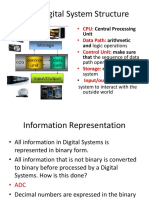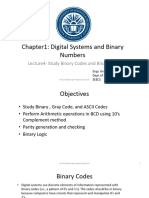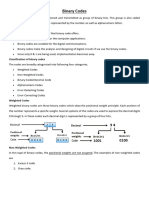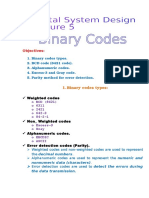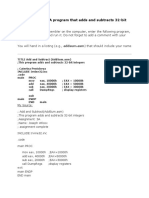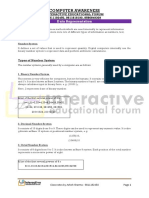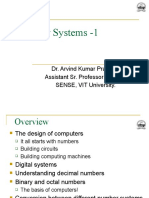0% found this document useful (0 votes)
50 views41 pagesBinary Codes
The document provides an overview of binary codes, including their definitions, applications in digital systems, and various types such as Binary-Coded Decimal (BCD), 2421, Excess-3, and Gray code. It also discusses character encoding standards like ASCII and error detection methods including parity checks and CRC. Additionally, it covers digital encoding techniques and BCD arithmetic operations.
Uploaded by
Kusumita SahooCopyright
© © All Rights Reserved
We take content rights seriously. If you suspect this is your content, claim it here.
Available Formats
Download as PDF, TXT or read online on Scribd
0% found this document useful (0 votes)
50 views41 pagesBinary Codes
The document provides an overview of binary codes, including their definitions, applications in digital systems, and various types such as Binary-Coded Decimal (BCD), 2421, Excess-3, and Gray code. It also discusses character encoding standards like ASCII and error detection methods including parity checks and CRC. Additionally, it covers digital encoding techniques and BCD arithmetic operations.
Uploaded by
Kusumita SahooCopyright
© © All Rights Reserved
We take content rights seriously. If you suspect this is your content, claim it here.
Available Formats
Download as PDF, TXT or read online on Scribd
/ 41





















